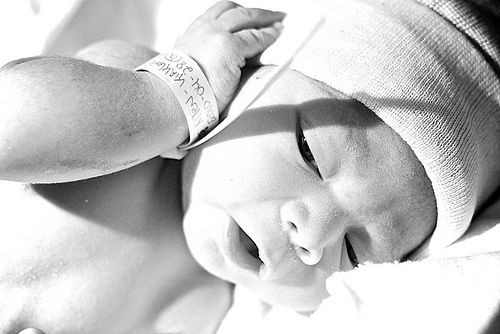C-Section To Natural Birth: VBAC Confirmed As Safe In Two-Thirds Of Deliveries

Nearly two-thirds of women who have a vaginal birth after a cesarean section (VBAC) do so successfully, according to a recent study published in BJOG: An International Journal of Obstetrics and Gynecology.
The primary concern for women who birthed their first child through cesarean section is rupturing the wall of the uterus, which can be weaker following a C-section. Women who opt for VBAC face varying risks for each delivery, depending on the reasons behind the decision, their age, and their ethnic background.
Researchers from the Royal College of Obstetricians and Gynecologists and the London School of Hygiene & Tropical Medicine analyzed data from 143,970 women who had their first baby by cesarean section between 2004 and 2011. They found that just over half (52 percent) underwent a natural birth for their second child. In addition to younger women more often attempting VBAC than older women (60 percent compared to 45 percent), black women and Asian women were more likely to attempt VBAC than white women (62 and 64 percent compared to 49 percent). Sixty-three percent of all attempted VBAC procedures succeeded.
Despite these differences, black women still showed lower success rates than white women, at 50 percent compared to 66 percent. In addition to attempting VBAC less often, older women also saw lower success rates compared to younger women. Women 34 years and older succeeded 59 percent of the time, while women 24 and under succeeded 69 percent of the time.
Hannah Knight, of the Royal College of Obstetricians and Gynecologists, and lead researcher of the paper, said these variations “could point to different patient preferences or a lack of access to elective repeat cesarean section for non-white women.”
"Interestingly, we also found an unexplained variation in the rate of attempted and successful VBAC between hospitals, which was independent of maternal demographic and clinical risk factors,” she said in a statement. "An informed discussion about whether or not to attempt a vaginal delivery after a cesarean section requires an assessment of the risk of emergency cesarean, and this paper provides valuable information both for women and the obstetricians and midwives caring for them."
The risk of uterine rupture is admittedly low. Women who deliver naturally after a C-section face a 0.47 percent risk, and if one does occur, the risk of perinatal death is approximately six percent. The best candidates for VBAC are women whose C-section was performed on a lower uterine segment, sometimes referred to as a “bikini cut,” where the stress during labor is reduced. All complications of C-section are made worse when the delivery is performed as an emergency, rather than as a planned procedure.
Even though the risks for uterine rupture are low, not all women are eligible for VBAC. Certain aspects of the birth can reduce a woman’s chances for delivering naturally, such as a history with uterine rupture, whether she’s delivering twins, if she’s past her due date, if the baby is breeched, or other unforeseen reasons, either maternal or fetal, that the doctors classify as unsafe for natural delivery.
"This study shows encouraging results with the majority of women who attempted a natural delivery after a primary C-section being successful,” John Thorp, BJOG deputy editor-in-chief, noted. “Current U.K. guidelines state pregnant women with a primary C-section and uncomplicated healthy second pregnancy should be given the option of a vaginal birth for their next baby, or an elective-repeat C-section, and counselled on the risks and benefits of both. Women with any questions about their delivery options should consult with their midwife or obstetrician."



























